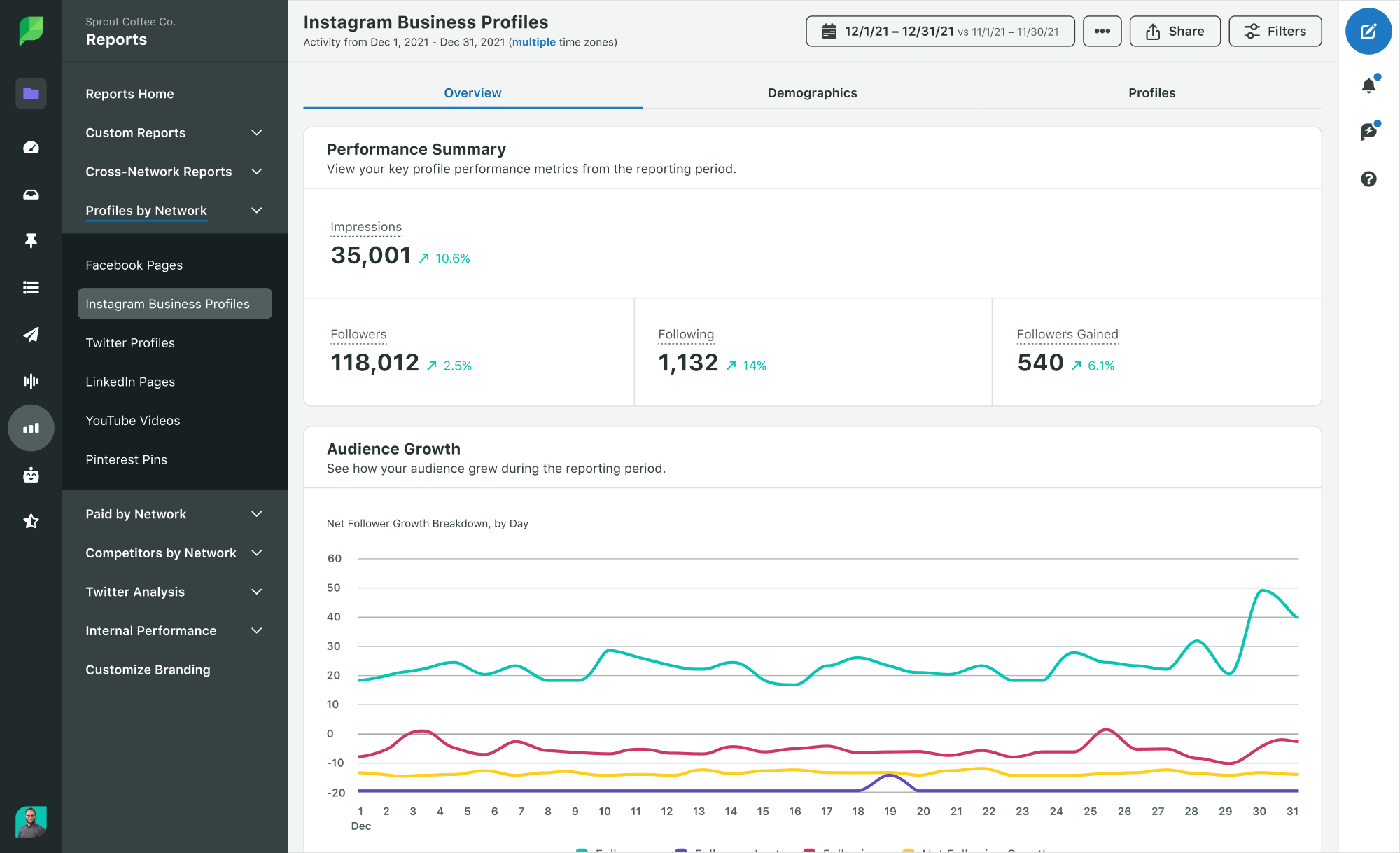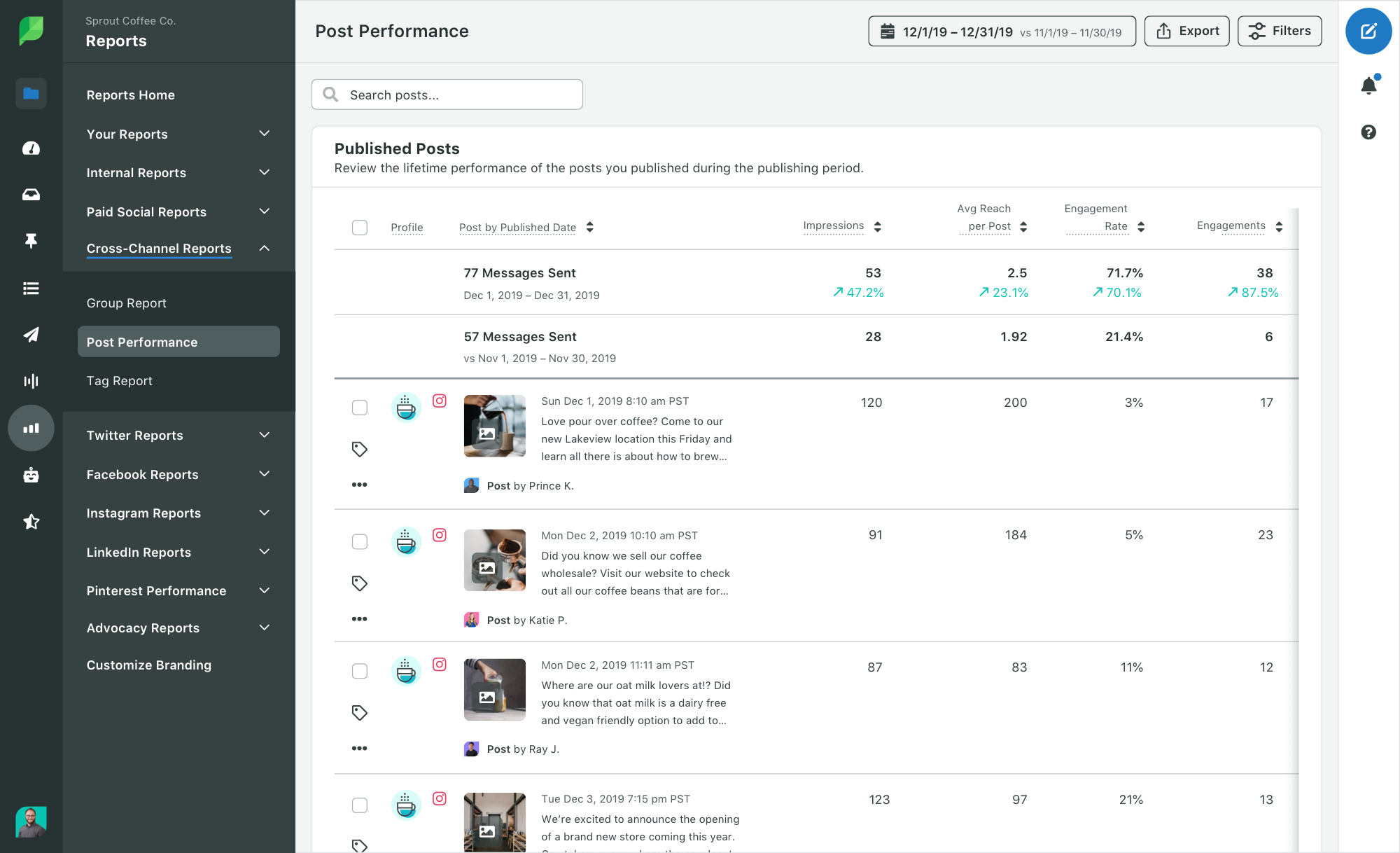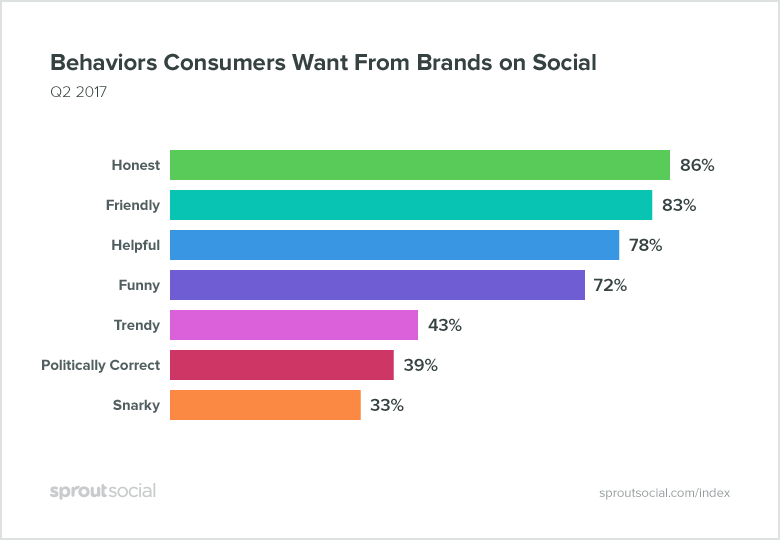How is it that you can post so often with seemingly good content but people just aren’t engaging with it? Many brands want more engagement around their social media posts but don’t know what else to do or are stuck in the same old strategy. Feed algorithms are tough to maneuver given that they’re tweaked all the time, sometimes without notice.
Your social media engagement can always be improved upon, there is no maximum engagement level that one can reach. The more engaged your audience is, the more that other people will see your posts and the better you’ll achieve those social media goals.
Let’s dive more into the world of social media engagement so we can better understand these questions:
- What is social media engagement?
- What are the components of an engaging post?
- How do you know when engagement is dropping off?
- What can you do short term and long term to increase engagement?
What is social media engagement?
Social media engagement is a very broad umbrella term that covers a lot of metrics. The major social media networks already have some component of engagement listed for free in their native analytics. The trick here is understanding what engagement is on a broad level and how to examine it at a micro-level.
On Facebook alone, engagement often means all possible ways of interacting with a Page’s posts and profile, messages and mentions all added together. When looking at engagement numbers between months or even years, this birds’ eye view is great at identifying a trend. But you want the other metrics if you want to understand more of where you can improve.
Using Facebook as an example again, engagement can be divided up into different areas:
- Interaction with your Page: call-to-action button clicks, profile clicks, any tab clicks
- Interaction with your posts: comments, likes, shares
- Interaction in direct messaging: messaging a Page or responding to a message
- Interaction with other Pages: mentions of your Page, commenting on other Pages’ posts
The above is not an exhaustive list of engagement that can happen on Facebook but it gives you an idea on where you might start to narrow in on your goals.
1. Analyze your current engagement
To know how to improve your engagement, you must first analyze it. As mentioned earlier, engagement analytics are available natively for all major platforms. If you use a management platform like Sprout Social, you’ll be able to see data summarized up for you.


In the above two examples, the number of engagements are added up for you for Instagram and the post engagement rate is averaged out per Facebook post. How do you analyze this? If you see post engagement dropping week over week, then your posts need to be adjusted to better suit your audience (assuming nothing else has changed in the world or in your paid promotions). If a post has a significant engagement rate over all the others, it’s important to make note of what made it stand out. This helps you identify what realm of content to focus on if you want to improve your engagement.
2. Set goals and define metrics
Set clear engagement goals here so you know what to focus your content efforts on. If you want more engagement on your posts, then you know you’ll need to focus on creating interesting content. The metrics that tie with it will be post engagement specific: how many people interacted with your posts and what types of engagement did they execute?
3. Understand the components of an engaging post
Every network is a little different based on what they favor over another in terms of engaging posts but similarities still stand out.

In The Sprout Social Index, Edition XVI: Above & Beyond, we identified what types of content that brands want from social, including 68% wanting images, 50% wanting video and 30% wanting text-based posts. Check your own analytics to see if these types of posts are the ones that are the most engaged with.

In the same study, we examined the reasons why consumers message brands on social media. In general, people engage on both ends of the spectrum, whether it’s from having a great experience or having customer service issues.
4. Execute strategy ideas
The last step in figuring out your engagement plan is to execute your strategy ideas. What ideas? Great question because it leads us to our next important section.
Brand-inspired ideas for engaging social media posts
There are a variety of ways you can create intrigue and interaction for your social media posts. Some are more short-term while others are more long-term strategies. A combination of both should keep your accounts in tip-top shape.
Klean Kanteen: Giveaway with other companies
One of the fastest ways to get engagement with your account is to host a giveaway. People love to get free things and if you make it an engagement-focused giveaway, plus it’ll help you hit your goals.
These giveaways can take place on Twitter or on Instagram or even cross-platform.
To make the giveaway even more special, Klean Kanteen partnered up with other bicycle companies to create the ideal bike kit. Bringing other companies into the giveaway means a wider audience for everyone, especially if they have similar target audiences. Some Instagram giveaways also ask for comments or follows for increased engagement.
Getty Museum: Get creative & funny
Humor goes a long way on social media, especially if it’s the type that your audience enjoys and engages with.

The Sprout Social Index, Edition XI: Social Personality report found that 3 in 4 consumers want humor from brands but only a third want that humor to be snarky.
Madonna and child.https://t.co/ZbnVeToUPE pic.twitter.com/7Vkl91CF6D
— Getty (@GettyMuseum) March 25, 2020
When the COVID–19 pandemic hit and the museums were forced to close to visitors, they turned to more creative ways of sharing their collections and engaging their audiences. The Getty Museum made a Twitter challenge: to recreate a work of art using only the household objects around you. In return, the Tweet received over 4k replies, 11k retweets and 26k favorites. It’s a great example of being flexible and meeting people where they are (at home).
Fenty Beauty: Create FOMO
The fear of missing out (FOMO) is a strong tactic to use when you want people to pay attention to your brand. It makes people feel part of an exclusive club when they’ve seen something others haven’t. Flash sales and intriguing content both fall into this category.
Fenty Beauty put a short video up and explicitly wrote that if that post received 200k likes, they would post an unreleased video of Rihanna on Friday. This is a two-fold strategy: the post would eventually reach 200k likes but the caption makes it even more necessary to reach it faster. And the second part is that people will come back on Friday to view the video, making that post a potentially high engagement one.
Dubsado: Think beyond feed posts
Feed posts aren’t the only types of posts available to you for engagement. Direct messages, replies and story interactions all count towards engagement numbers.

Dubsado is a CRM platform with a very engaging user base. Their feed posts aren’t particularly high in engagement but it’s more than made up in their branded Facebook Group. Potential and current users are able to interact with each other and bounce ideas. The company also makes product announcements in the group and you often see their own customer service representatives hosting Live videos.
REI: Use stickers that encourage engagement
Stickers are an increasingly bigger component of Instagram Stories. From polls to questions to the new challenge sticker, you have many options to make your Stories more engaging.

REI featured an influencer and had them answer questions sent in by followers on the subsequent story posts. The topic was outdoor cooking, one that is very relevant to their audience. During the answers, they were also able to link out to products and articles. In return, the influencer received a broader audience and more interaction. It’s an engaging win for everyone involved.
National Geographic: Indulge in the fun holidays your brand’s way
Star Wars Day on May 4 has become a big holiday for brands. Even if you weren’t a fan of the franchise, it would be difficult to miss the medley of posts that are churned out by companies. The important part of recognizing these kinds of holidays is to make sure it’s still relevant to your brand. It won’t do you any good to post about Ice Cream Day if you can’t figure out how your brand fits into it.
National Geographic is not a brand that one usually associates with Star Wars. However, the account used storytelling in their caption to tie it in with the current pandemic time and Star Wars. The resulting post is one that fits much better with the holiday and their brand than one would expect.
Toms: Brand partnerships
Another tried-and-true strategy for engagement and sales is partnering up with other like-minded brands to produce something fun and interesting. Everyone loves a good collaboration.
Toms worked with Marvel to create comic-inspired shoes of all kinds. Both are already well-known brands so the partnership was more about creating something unique for people to desire. FOMO definitely plays a role here too. If you’re a fan of Marvel and you were already thinking of buying some new shoes, then these are the perfect pair for you. And that’s what the two brands are banking on.
Conclusion
To increase your social media engagement, you’ll need to break the process down into a few parts. First, understand what engagement is and which parts you want to focus on. Second, analyze the current engagement you have. And third, figure out which long-term and short-term strategies you want to use to increase the engagement.
To help you plan and execute these strategies, take advantage of using our social media toolkit. Templates and guides are ready for you: all you need to do is fill them out to get going on improving your engagement metrics.
This post How to improve your social media engagement originally appeared on Sprout Social.
from Sprout Social https://ift.tt/2qF81fH
via IFTTT
No comments:
Post a Comment